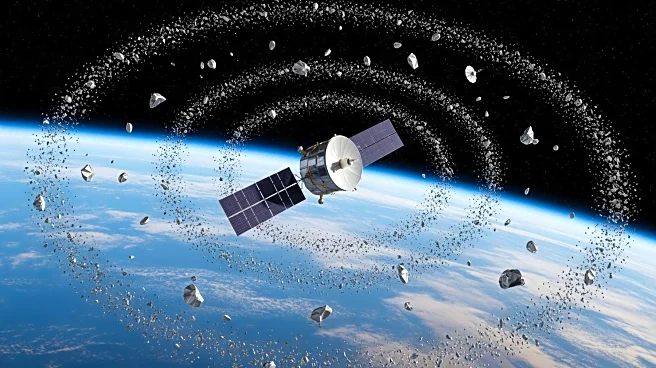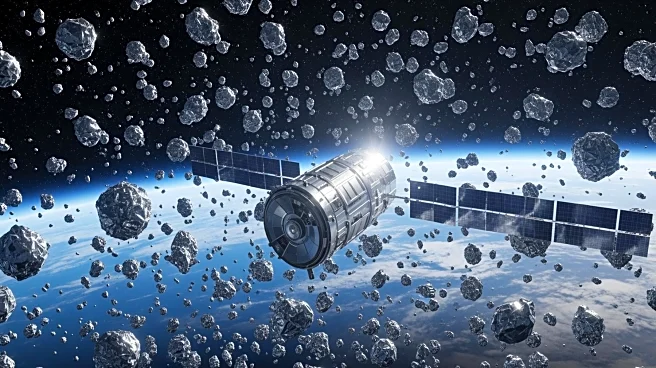What's Happening?
The European Space Agency (ESA) is gearing up for a critical ministerial council meeting, CM25, scheduled to take place in Bremen, Germany, on November 26-27. This triennial summit will see ministers from ESA member states convene to finalize funding
plans, which have become increasingly significant due to emerging international competition and evolving relationships. The meeting will address a €22 billion ($25.6 billion) funding proposal, influenced by the European Union's ambition to enhance military space capabilities and the Trump administration's 2026 budget proposal for NASA, which includes cuts affecting some ESA missions. ESA officials are set to meet on November 17 to resolve differences and finalize the funding proposal, with individual states pledging support for various programs. The summit follows the Dubai Airshow and coincides with the Space Tech Expo, highlighting the busy period for the space industry.
Why It's Important?
The decisions made at the ESA ministerial meeting are crucial for the future of European space initiatives, particularly in light of the U.S. budget cuts that threaten collaborative missions. The funding allocations will impact ESA's ability to pursue ambitious projects, such as the Mars sample return mission and the European Service Module for NASA's Artemis lunar program. Additionally, the meeting will address Europe's military space goals, including the development of a low-Earth-orbit position, navigation, and timing system to enhance the Galileo constellation. These initiatives are vital for maintaining Europe's competitive edge in space technology and ensuring autonomy in critical areas. The outcomes will influence the trajectory of European space exploration and its role in global space endeavors.
What's Next?
Following the ministerial meeting, ESA will need to implement the funding decisions and begin work on the approved projects. This includes advancing technology for the LEO-PNT system and supporting the high-resolution Earth observation program. ESA will also focus on evolving its launch capabilities, such as the Ariane 6 and Vega rockets, to diversify launch options. The agency will continue to seek solutions to fill gaps left by reduced U.S. contributions, particularly in Earth science missions. The success of these initiatives will depend on the collaboration between ESA member states and their commitment to funding and technological development.
Beyond the Headlines
The ESA ministerial meeting highlights the broader geopolitical dynamics in space exploration, where international collaboration and competition are increasingly intertwined. The emphasis on military space capabilities reflects a shift towards using space technology for defense purposes, raising ethical and strategic considerations. Additionally, the focus on Earth science missions underscores the importance of addressing climate change through space-based observations, despite shifting priorities in U.S. policy. These developments may lead to long-term shifts in how space exploration is conducted and funded globally.















